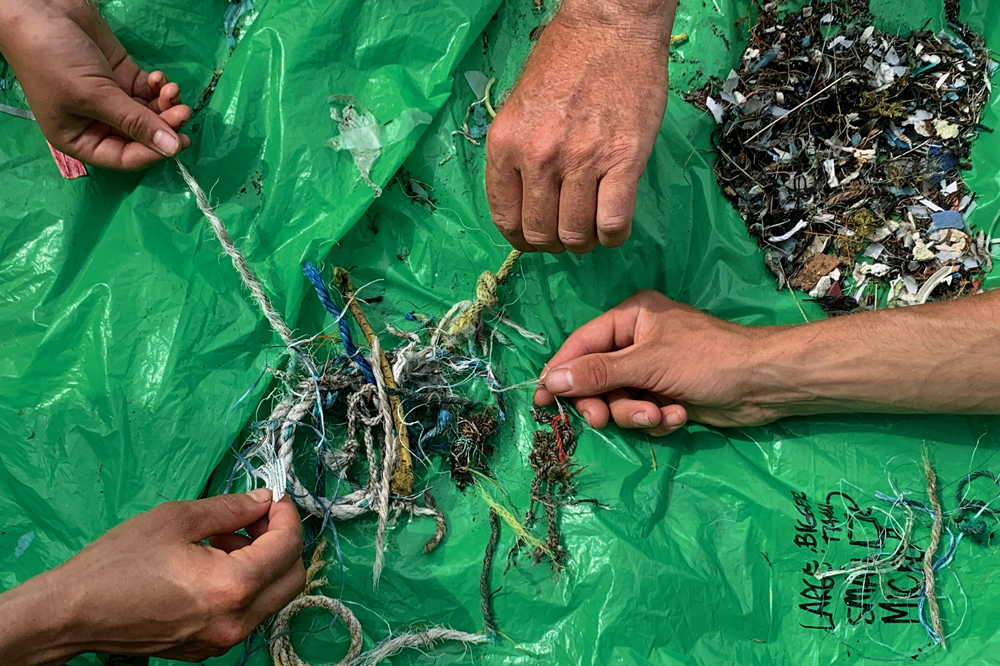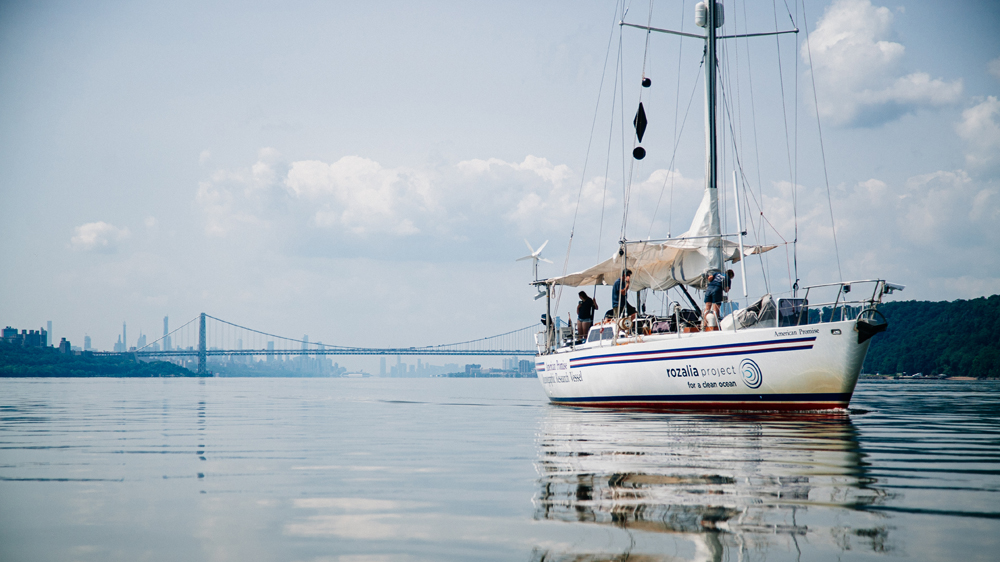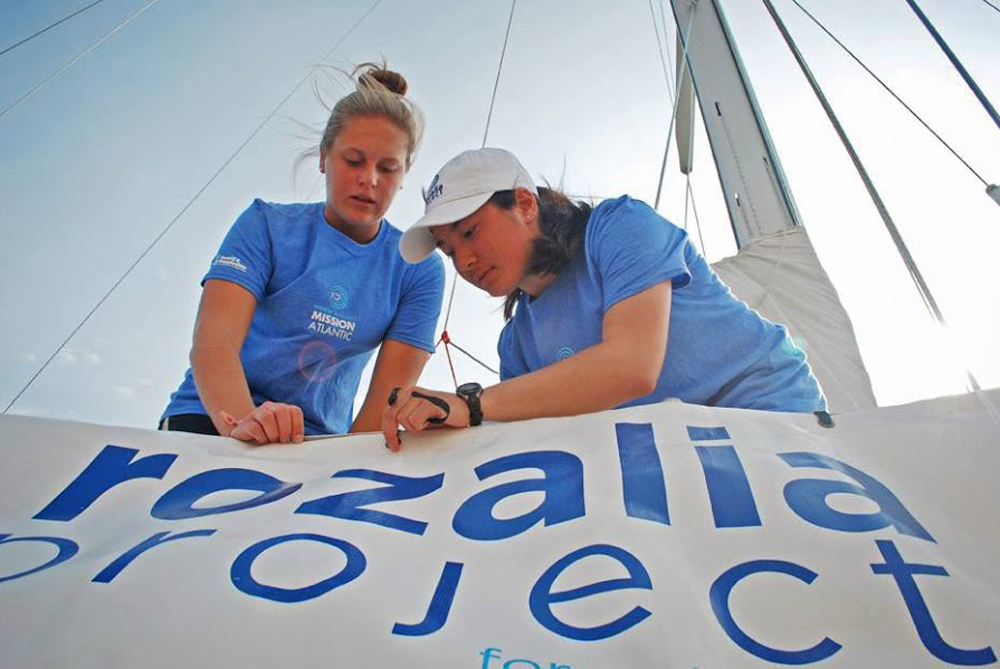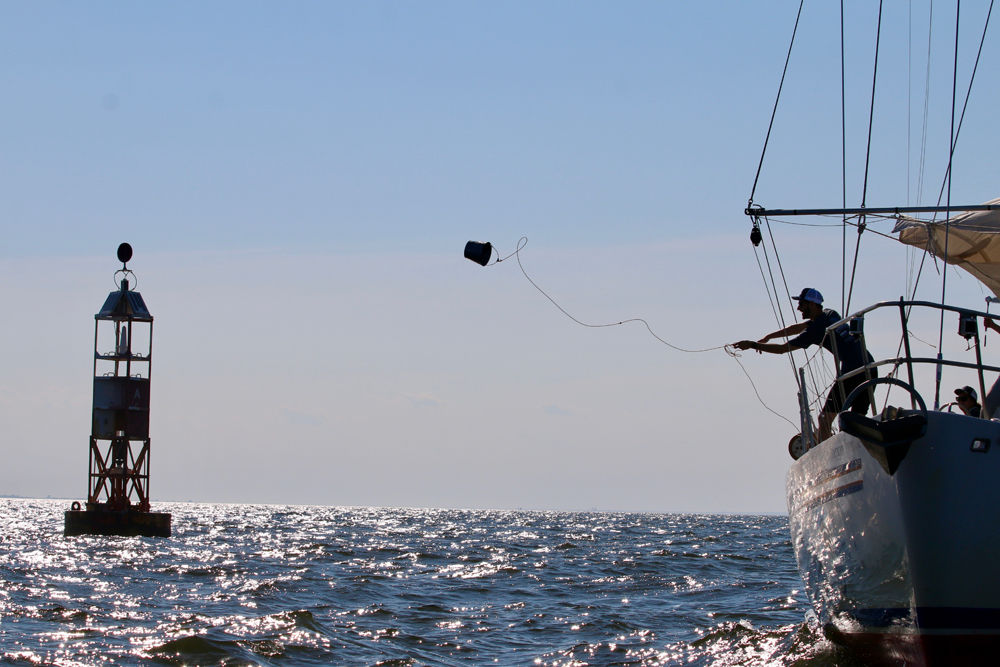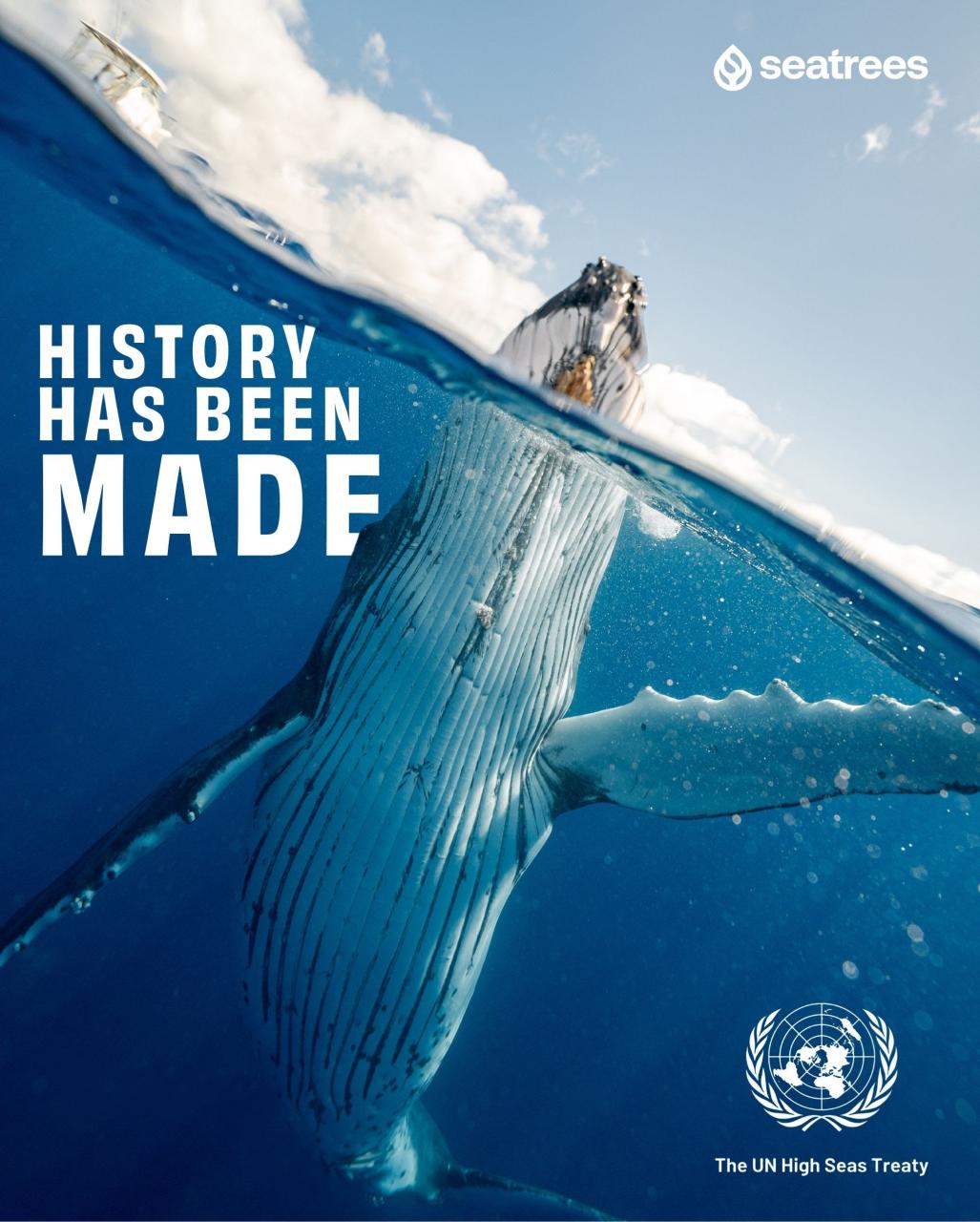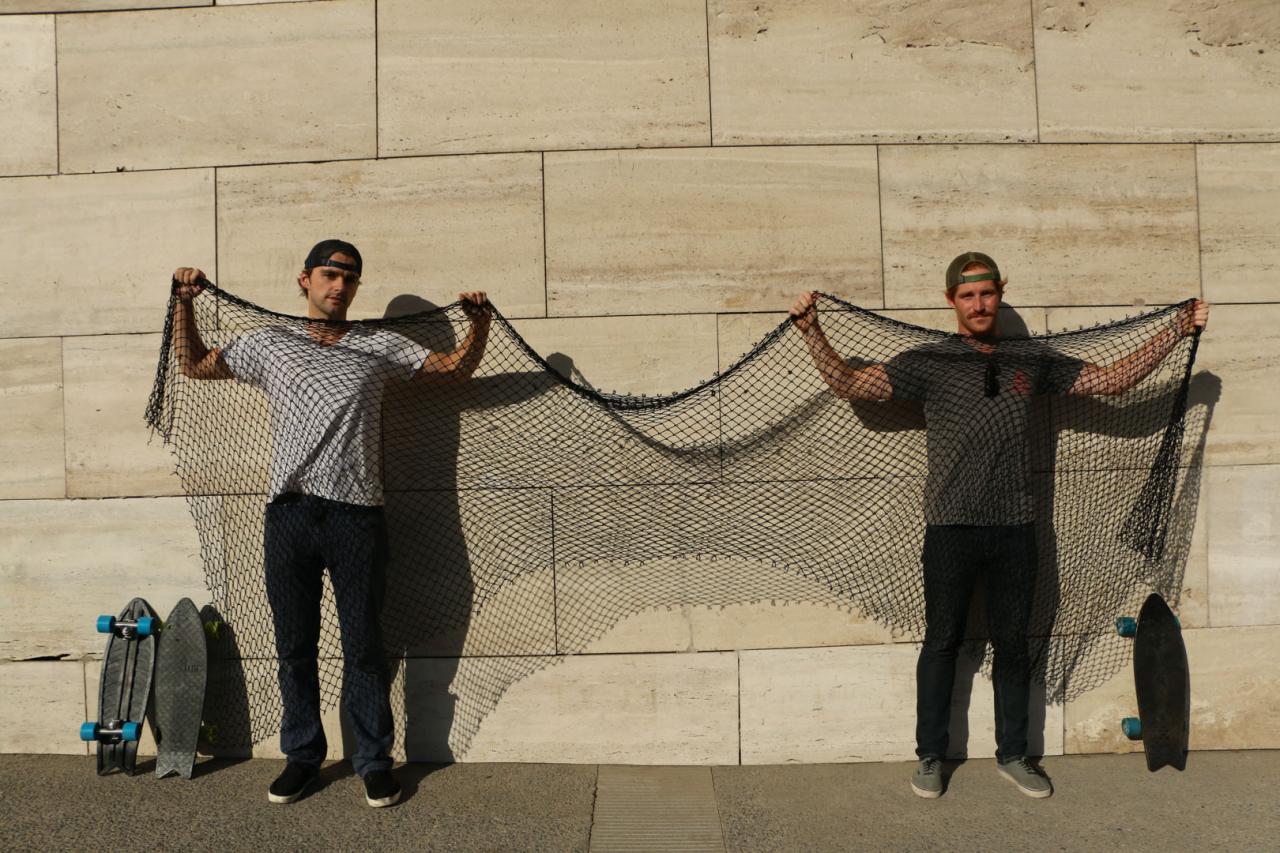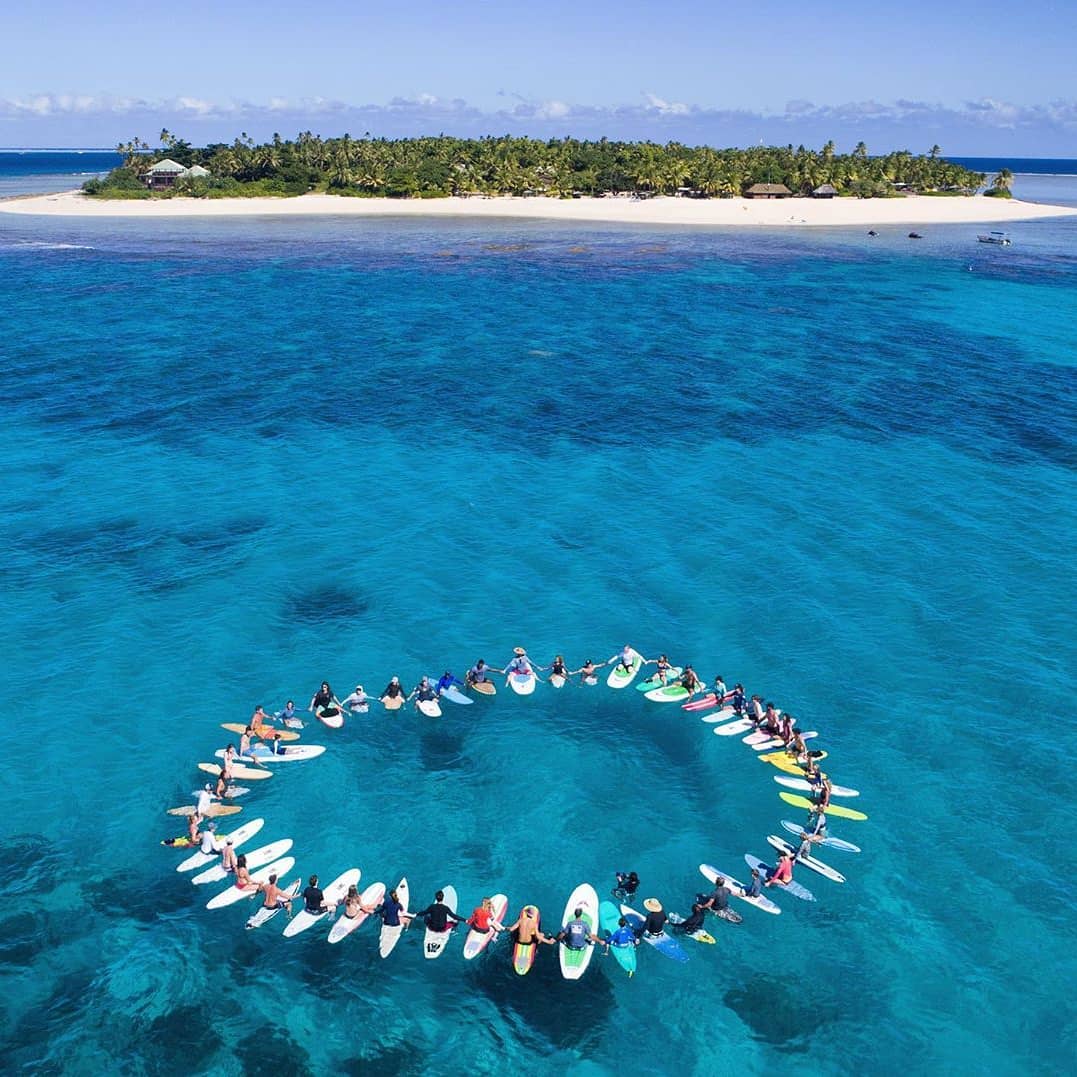Trash in the ocean affects us all. Whether it’s in your face at your local beaches, prompting beach cleanups, wrapping around your fins while you surf and paddle, or wreaking havoc on your favorite sea creatures, ocean debris is a threat to marine habitats throughout the marine food web, impacting coastal fisheries and even entire economies. This trash is a blight on our water environment. But there is hope and help. Read on.
The Rozalia Project for a Clean Ocean is a dedicated nonprofit based in Vermont that encourages you to take action. Rozalia Project works to protect the ocean from the surface to the seafloor, in urban and coastal waters, throughout the US and worldwide. They inspire others with a multi-faceted strategy regarding ocean health, including using data-cleanups (check out their app!), education, innovation, technology and offering solutions-based research to address the problem of marine debris in rivers, lakes and oceans.
Rozalia Project’s seafaring expeditions are conducted from the deck of the American Promise, a 60’ sailing research vessel that once held the non-stop solo circumnavigation record. She is now the world’s greenest sailing research vessel. Her upgrades include being equipped with solar, wind and hydropower to run all onboard computers and electronic equipment, plus a remotely operated robot named “Hector the Collector” that can take underwater video and still photos of the seafloor and the accumulated trash resting there. Hector can also grab anything, from plastic bags to cans, to discarded fishing lines,nets, etc., and bring them to the surface for analysis and proper disposal. Analysis is crucial; more about that later.
The Rozalia Project focuses on the three most pressing marine debris issues:
Improperly disposed fishing gear (in the ocean)
Consumer debris (in the ocean)
Microplastics (in the ocean).
A recent expedition on the American Promise is known as the Hudson River Microplastic Sampling and Technology Expedition. This project, led by The Rozalia Project’s founder Rachael Miller, researched microplastic and microfiber pollution in the air, whole water column and soil of the mighty Hudson River in New York, starting from high in the Adirondack Mountains all the way down the river to Manhattan to where the Hudson meets the Atlantic. In addition to investigating the tiniest of marine debris and their impact on the ecosystem, the expedition was also a field test for new science-enabling innovations and techniques. The team included Dr. Claire Gwinnett and researchers from the Forensic Science Dept. at Staffordshire University, a materials engineer from Patagonia, water scientists from the CDC, visual storytellers, educators and more.
Rozalia Project uses their collected data to create solutions such as the Cora Ball, the world’s first microfiber-catching laundry ball. Rozalia Project also translates their science into presentations and hands-on educational activities for kids of all ages to learn about our threatened ocean environment, engage in scientific fact-finding, and take part in solutions training and workshops.
Tips for Greater Ocean Health that YOU CAN DO!
Tip #1: Rozalia Project believes that “lots of littles make a big”. Lots of small, even tiny, bits of trash add up to big problems for our oceans and planet. But lots of small positive actions add up to a big, positive impact. We thank those of you who are already taking steps to reduce your carbon footprints by using reusable grocery bags, coffee mugs, water bottles and stashing reusable cutlery in your backpacks and cars. The ocean thanks you!
Tip #2: There are not yet a lot of organic-down-to-the-dyes clothing options for ocean athletes, but we can still make conscious choices that affect our ocean’s health. Here are a few simple tips for reducing the impact of performance gear (which tends to get regularly washed after each use) by reducing microfiber shedding and keeping those fibers out of our waterways:
1.) Wash less often
2.) Use cold water when you wash
3.) Wash loads that are at least ¾ full or completely full
4.) When possible, use an in-drum device in the washing machine like the Cora Ball or an in-line filter such as the Lint-Luvr to make a difference
5.) Don’t use the dryer. Dry garments on an indoor or outdoor rack.
Tip #3: Are you already doing beach cleanups? Bring it up a notch by adding data collection! This data becomes the solution part for cleanups. It helps us understand what debris is floating out and onto our beaches. Knowing the concentration of higher pollutants leads to more effective prevention strategies. Check out the Marine Debris Tracker and select the Rozalia Project short form. Rozalia Project can then help you zero-in on what can be done to reduce marine debris in your area.
Tip #4: This one’s REALLY IMPORTANT: Vote with your wallet! If rampant consumerism, including the proliferation of a throw-away culture, fast-fashion and too much reliance on landfills contribute to our marine debris problems, conscious consumerism is a big step in the right direction. This is how we start to turn off the tap on goods and materials that make their way into public waterways either whole or as microplastic. Please stop and think about everything you buy before buying it. Consider its source, its material, who made it, what will happen at the end of its life and if you really need it.
As water people we understand that each one of us who values the beauty and energy of rivers, lakes and the vast ocean can be a voice to protect it. Your actions will make a difference, and if we do it together, our actions will have an even greater impact.

